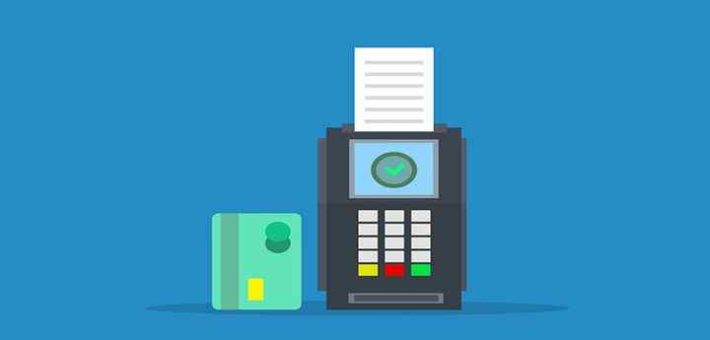More MCQs
HOME
Categories
Courses
Audit and Assurance MCQs
» ISA 705 Modifications to the opinion MCQs
» ISA 706 Emphasis of matter paragraphs and other matter paragraphs MCQs
» ISA 720 the auditor’s responsibilities relating to other information MCQs
» Not for profit organizations Audit MCQs
» Tests of controls Audit MCQs
Tests of controls
Tests of control should be seen within the context of Risks, Control objectives, Controls and Tests of those controls. Here on MCQs.club we have prepared easy Multiple-Choice Questions (MCQs) on Tests of controls that cover MCQs on test of controls vs substantive tests, examples of tests of controls, audit sampling methods for tests of controls. These MCQ on Tests of controls are useful for Professional accountancy exams, Business management exams and Competitive exams.
- The auditor takes a systems-based approach wherever possible. If the systems and the controls are satisfactory, the figures produced by the systems should be reliable. What conditions are necessary before the auditor can adopt a systems-based approach?
- The systems and controls in place should be designed to minimise the risks of misstatements.
- The systems and controls should actually operate effectively. The auditor gains evidence that the controls operate in practice by performing tests of control.
- Both A&B
- None
- Where systems are IT based, specialised techniques of obtaining audit evidence may be required. These are known as computer-assisted audit techniques (CAATs).
- True
- False
- Which of the following statement is correct?
- CAATs are often necessary in the audit of IT systems because these systems may not provide an adequate audit trail.
- The auditor needs to „get inside the computer‟ to check the completeness and accuracy of the processing. CAATs allow the auditor to achieve this.
- Both A&B
- None
- Commonly-used types of CAATs are:
- audit software
- test data (which is of most relevance to tests of control)
- Both A&B
- None
- The costs (disadvantages) related to the use of CAATs may include:
- purchasing or developing the programs
- keeping programs up-to-date for changes in hardware and software
- training audit staff in the use of computer systems to run the CAATs. CAATs are of no value unless auditors are properly trained in how to use them.
- All of the above
- Tests of control should be seen within the context of:
- Risks
- Control objectives
- Controls and Tests of those controls.
- All of the above
Sales system
- The objectives of controls in the sales system are to ensure that:
- All orders are processed.
- All orders are despatched.
- Invoices are raised accurately.
- Revenue is recorded in the period to which it relates.
- All of the above
- What are the risks in a system of receiving and processing customer orders?
- Orders may be accepted from existing customers that take them over their credit limit.
- Some orders are overlooked and are not processed. Some orders are processed twice.
- The customer is given a price discount without proper authorisation.
- All of the above
- Suitable control objectives against receiving and processing customer orders risks may therefore be:
- Giving credit to new customers and existing customers must be controlled, and must be consistent with company policy.
- All orders from customers are processed correctly. Orders should not be processed if they would take the customer above his agreed credit limit.
- Both A&B
- None
- What are the risks in a system of despatch of goods and invoicing?
- For some customer orders, goods are not despatched, or the goods are despatched twice.
- Customers may claim that they did not receive the goods that have actually been delivered to them.
- Returns from customers are not properly recorded, so that the client company does not know the correct figure for sales net of sales returns.
- All of the above
- What are the risks in a system of Recording sales and accounting?
- There is a risk that invoices and credit notes may not be recorded in the accounting system.
- There is a risk that invoices and credit notes are recorded in the wrong customer accounts.
- There is a risk that debts may be written off as uncollectable (“bad”) without proper consideration.
- All of the above
Purchase system
- The main elements of the accounting system for purchases and other expenses may be classified as:
- Placing orders
- Receiving goods (or services) and receiving invoices
- Recording and accounting for purchases and expenses.
- All of the above
- The objectives of controls in the purchases system are to ensure that:
- All purchases are made with suppliers who have been checked for quality, reliability and pricing.
- Goods received are recorded promptly.
- Invoices received are correct in terms of quantities, prices, discounts.
- All purchases and related payables are recorded.
- All of the above
- What are the risks in a system of ordering goods or services from suppliers?
- Orders for goods or services are made without approval or authorisation.
- Orders may be placed with suppliers who are not on the “approved list”.
- For large orders, suppliers are not asked to submit tenders. When suppliers are asked to tender, the order might not be given to the supplier quoting the lowest price.
- All of the above
- What are the risks in a system of Receiving purchases and invoices?
- There is a risk that goods may be accepted from a supplier without having been ordered.
- There is a risk that the company may fail to claim discounts from suppliers for orders above a certain size, or as regular customers of the supplier.
- There is a risk that suppliers may invoice for goods that have not actually been provided.
- All of the above
Payroll system
- Elements of the payroll system may be classified as:
- Calculating gross wages and salaries
- Recording wages and salaries payable in the accounts
- The calculation of tax and other deductions from wages and salaries
- The payment of wages and salaries.
- All of the above
- The objectives of controls in the payroll system are to ensure that:
- Employees are only paid for work actually done.
- Employees are paid at the correct rates of pay.
- Access to standing data is restricted to prevent fraud or error occurring.
- All payroll amounts are recorded.
- All of the above
- Risks in Calculating gross wages and salaries include:
- Wages and salaries may be paid to individuals who are not employees.
- Employees may be paid for work they have not done.
- Gross wages and salaries could be calculated incorrectly.
- Taxation and other deductions could be calculated incorrectly.
- All of the above
Inventory system
- The objectives of controls in the inventory system are to ensure that:
- Inventory levels meet the needs of production (raw materials and components) and customer demand (finished goods).
- Inventory levels are not excessive, preventing obsolescence and unnecessary storage costs.
- All inventory is recorded.
- All of the above
- The main risks associated with inventory are:
- Inventory records are inaccurate.
- Inventory may be stolen or damaged.
- Inventory may be valued at incorrect amounts.
- Too little inventory may be held, so that customers’ orders cannot be fulfilled.
- All of the above
Cash and Bank system
- Auditors will be particularly interested in establishing that all receipts belonging to the organisation have been recorded – completeness is a key assertion in the area of cash receipts.
- True
- False
- The objectives of controls in the cash cycle are to ensure that:
- Petty cash levels are kept to a minimum, preventing theft.
- Payments can only be made for legitimate business expenditure.
- Receipts are banked on a timely basis to prevent theft.
- Cash movements are recorded on a timely basis.
- All of the above
- The main risks associated with non-current assets are:
- Non-current assets which the company does not need could be ordered.
- Expenditure on non-current assets may be recorded at incorrect amounts, or as revenue instead of capital expenditure.
- Both A&B
- None
—more to come soon—




